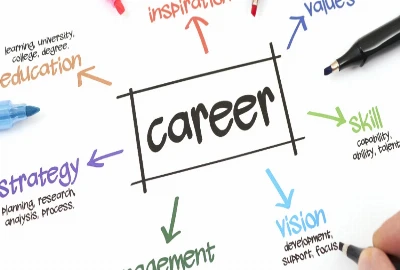Main Character Syndrome Is Out—Supporting Cast Energy Is In

For years, the internet has glorified “main character syndrome”—the idea that you should live your life as if you’re the star of your own movie. TikTok, Instagram captions, and self-help trends have all embraced this mindset, encouraging people to center themselves in every scenario. The logic was empowering: by treating yourself as the protagonist, you could boost confidence, focus on self-growth, and refuse to be sidelined.
But the obsession with being the main character has its downsides. Constantly putting yourself at the center of the story can lead to self-absorption, unrealistic expectations, and even burnout from the pressure to live an “aesthetic” life worthy of social media documentation. More importantly, it overlooks the beauty of collaboration, interdependence, and the fact that life is not a solo performance but a shared ensemble.
Enter supporting cast energy—a refreshing cultural shift where people are embracing roles beyond the spotlight. This isn’t about dimming your shine but about recognizing the value of being part of something bigger. Supporting cast energy means showing up for friends, celebrating others’ wins, and realizing that happiness doesn’t always come from center stage. In many ways, this trend reflects a backlash against hyper-individualism and a growing desire for community, authenticity, and balance.
This blog explores why main character syndrome is fading, how supporting cast energy is emerging as a healthier alternative, and what we can learn from shifting our focus from self-centered to community-centered living.
The Rise and Fall of Main Character Syndrome
Main character syndrome didn’t appear out of nowhere—it was a cultural response to the age of social media. Platforms like TikTok and Instagram rewarded people who presented themselves as protagonists in carefully curated storylines. Trendy sounds, aesthetic coffee montages, and captions like “just living my main character life” became shorthand for confidence and self-worth. At first, it was liberating. After all, many people needed encouragement to prioritize themselves and take control of their narratives.
But the cracks soon showed. Constantly striving to be the main character created unrealistic standards. Everyday moments were no longer just lived—they had to be documented, edited, and shared for validation. The pressure to look like a protagonist in every situation made ordinary experiences feel inadequate. Not every commute is cinematic, and not every brunch outing is life-changing.
Psychologically, main character syndrome often fed into narcissism. It encouraged people to see others as supporting roles in their story, minimizing empathy and mutual respect. Friendships, workplaces, and even romantic relationships began to suffer when one person insisted on always being the center of attention. Instead of boosting self-esteem, the syndrome sometimes led to isolation and disappointment when reality failed to match the fantasy.
Culturally, it also reflected a growing hyper-individualism. In Western societies especially, the emphasis on personal success, branding, and self-promotion often overshadowed collective well-being. “Main character energy” was just another symptom of a world that values spotlight moments over shared growth.
Now, as people grapple with burnout, loneliness, and the emptiness of constant self-focus, the pendulum is swinging the other way. Main character syndrome is being replaced by something more sustainable, inclusive, and grounded: supporting cast energy.

Supporting Cast Energy: What It Means and Why It Matters
Supporting cast energy is about shifting focus from “me” to “we.” Instead of obsessing over being the star of every situation, it celebrates the joy of being part of an ensemble. Just as movies and TV shows rely on supporting characters to enrich the story, real life thrives when people step into roles that highlight collaboration, encouragement, and empathy.
At its core, supporting cast energy means embracing humility. It’s recognizing that not every win has to be yours to celebrate, and that sometimes the most fulfilling moments come from helping others succeed. For example, being the friend who plans the surprise party, the colleague who quietly supports a team project, or the family member who listens without trying to redirect the conversation. These roles may not bring the spotlight, but they create deeper bonds and more meaningful experiences.
This energy also pushes back against the idea that success is a zero-sum game. Main character syndrome often breeds competition: if someone else is thriving, it feels like your story has lost momentum. Supporting cast energy flips that mindset. It teaches that lifting others up doesn’t dim your shine—in fact, it makes life richer and more connected.
On a societal level, embracing supporting cast energy fosters stronger communities. In workplaces, it encourages collaboration over individual glory. In friendships, it deepens trust. In families, it builds resilience and interdependence. Especially in a post-pandemic world, where isolation and loneliness have been widespread, this shift feels more necessary than ever.
Ultimately, supporting cast energy isn’t about erasing individuality. You can still have ambitions, dreams, and moments in the spotlight. The difference is that you no longer measure your worth by being the constant center of attention. Instead, you embrace the balance of sometimes leading, sometimes supporting, and always contributing to a story bigger than your own.

How Social Media Fuels the Shift
Ironically, the very platforms that amplified main character syndrome are now fueling the rise of supporting cast energy. Social media users have grown weary of hyper-polished, self-centered narratives. In their place, authentic, community-driven content is thriving.
On TikTok, for instance, creators are shifting from “main character” montages to collaborative skits, duets, and group challenges. These formats highlight interaction rather than isolation. Instagram, once the hub of glossy individual branding, is seeing a surge in carousel posts celebrating friendship groups, team milestones, or collective achievements. Even LinkedIn has leaned into community-driven storytelling, with more users posting about teamwork and collaboration instead of solo triumphs.
The popularity of memes also reflects this trend. Viral jokes about being the “funny side character” or “the best friend energy” resonate widely because they highlight relatability over perfection. People are finding comfort in identifying with quirky, supportive roles rather than always aspiring to be the flawless lead.
This shift is also practical. Audiences are savvy, and they can sense when someone is too self-absorbed. Influencers who constantly push main character narratives often face backlash for being out of touch, while those who highlight others—friends, fans, collaborators—build stronger, more loyal communities. Supporting cast energy isn’t just a feel-good trend; it’s becoming a social media survival strategy.
The algorithm plays a role too. Platforms reward shareable, community-oriented content, which naturally amplifies supporting cast narratives. Clips celebrating friendship, teamwork, or group humor tend to go viral because they resonate broadly, reminding viewers of their own connections.
In short, social media is no longer just about showcasing the self—it’s becoming a space to showcase community. And that’s why supporting cast energy is flourishing in a place once dominated by main character syndrome.

How to Embrace Supporting Cast Energy in Everyday Life
If supporting cast energy is the new wave, how can you actually embody it? It’s less about downplaying yourself and more about intentionally showing up for others. Here are a few practical ways to shift into this healthier mindset:
Celebrate other people’s wins. Instead of seeing someone else’s success as competition, cheer them on. Whether it’s a friend landing a job or a sibling reaching a milestone, practice joy in others’ achievements.
Listen more than you speak. Supporting cast energy thrives on empathy. In conversations, resist the urge to redirect attention back to yourself. Sometimes the most powerful role you can play is that of a thoughtful listener.
Offer help without seeking credit. Whether at work or in personal life, contribute in ways that lift others up, even if no one notices. True support doesn’t need applause.
Share the spotlight. If you’re in a leadership role, highlight team efforts rather than claiming credit for everything yourself. People remember those who uplift others.
Find joy in ensemble moments. Life’s best experiences often come from shared laughter, group adventures, or quiet acts of solidarity. Supporting cast energy means valuing those collective highs as much as individual achievements.
Redefine success. Instead of framing success solely as personal milestones, consider the impact you’ve had on your community, friendships, and relationships.
These practices don’t mean abandoning ambition or individuality. They simply shift the narrative away from constant self-focus toward shared growth and genuine connection. By leaning into supporting cast energy, you’ll likely find your relationships deepening and your sense of fulfillment growing.




